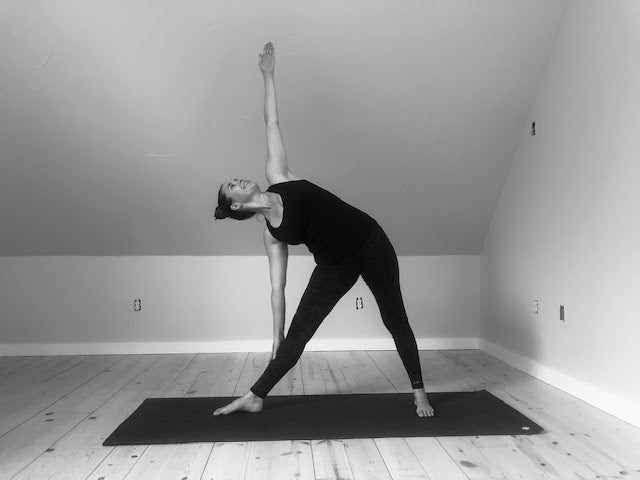
Utthita Trikonasana: An Ayurvedic Guide to Triangle

Utthita Trikonasana, commonly known as Triangle Pose, is composed of three Sanskrit terms: ‘utthita’ meaning extended, ‘tri’ meaning three and ‘kona’ meaning angle. The literal translation is extended three angle posture and there are in fact three (tri)angles created by this posture. As Alanna Kaivalya, co-author of Myths of the Asanas explains: “the first being the one with our legs and the floor, the second one, underneath the side of the body with the arm and front leg and the third, connecting the top hand and two feet”. A triangle is able to support a lot of weight and is considered one of the most strong and stable shapes. This is true of Utthita Trikonasana as it cultivates steadiness and ease within the body.
Some of the benefits of Triangle Pose include:
Triangle Pose balances the three doshas vata, pitta and kapha.
Vata- For vata, Triangle Pose has the ability to ground and calm the nervous system which pacifies vata imbalances like anxiety, fear and overwhelm.
Pitta- For pitta, Triangle Pose helps aid in proper digestion and metabolism which are both functions of pitta dosha in the body. This posture is also grounding and calming which soothes the sometimes heated emotions connected with pitta.
Kapha- For kapha, Triangle Pose tones the muscles of the body, helping to balance the heavy nature of kapha. The deep stretch this posture provides helps to bring lightness into a kapha body type. Lastly, it also opens up the chest which can help expel mucus and congestion out of the respiratory tract as well as reduce feelings of melancholy, attachment and/or lethargy.
How to Do Utthita Trikonasana:
- Begin in Tadasana (Mountain Pose).
- Step the right foot back, allowing the feet to be 3 feet distance apart.
- Bring the right foot to a 45 degree angle and ground firmly into the outer edge of the foot.
- Have the left toes pointing forward and keep both legs strong but be aware to not lock out the left knee.
- Take a look at your feet and make sure that if you drew an imaginary line, the left heel would dissect the arch of the right foot.
- Once feeling strong and steady in the legs and open through the hips, make sure the shoulders are square to the right side of the mat and extend the arms out in a “T” position with the palms facing down.
- Exhale and extend your torso to the left leg and either place the left hand on the floor, if available, or hold onto the left shin with your left hand.
- Extend the right arm up overhead and, if available, bring the gaze to the right fingertips, or simply keep the neck in a neutral position. The left arm and right arm should be in one fluid line. The left hand grounds as the right arm reaches upward.
- It is important to keep the hips, shoulders, belly and chest open. If you feel like the posture has changed shape and any of these parts of the body are not open any longer, simply come out of the posture a little bit. Think, less is more. It is more important to maintain proper alignment than how far the left hand can reach down.
- Continue to press into the outer edge of your right foot and have equal weight in both of the feet.
- Firm the thighs and feel strong and tall through the spine.
- Draw the tailbone down slightly in order to avoid flaring the front ribs.
- Hold the posture for 5 rounds of breath.
- Inhale to come up and out of the posture.
- Step back to Tadasana.
- Repeat this series on the opposite side.
Precautions:
Contraindications for Utthita Trikonasana:

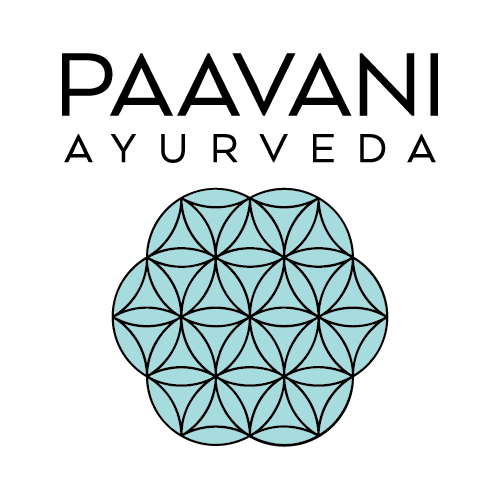
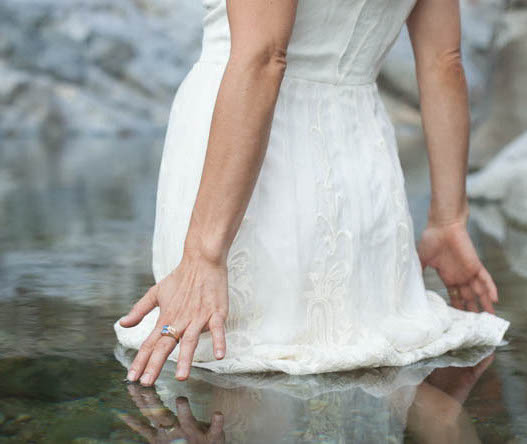
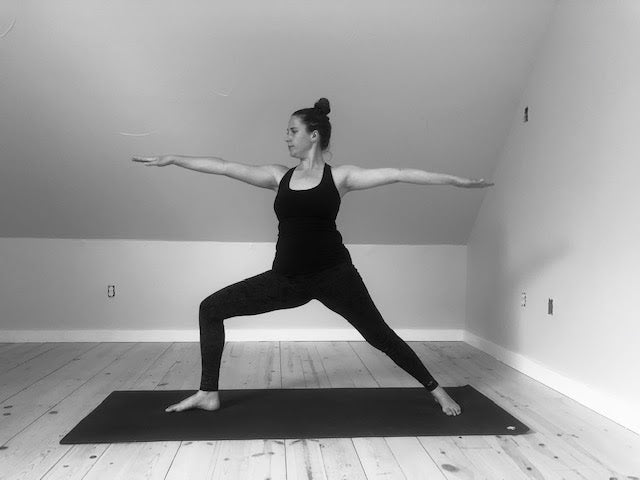
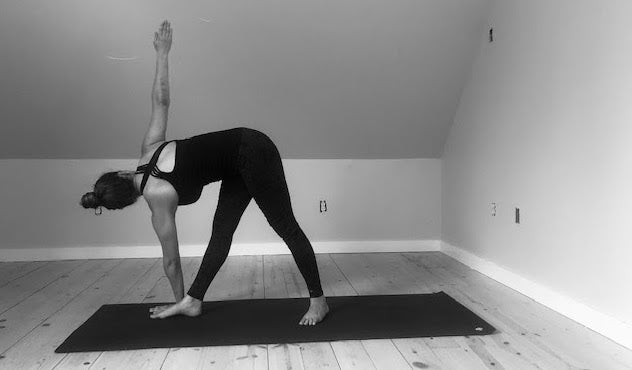
2 comments
@AP.RAVICHANDRAN the images displayed in this blog do not show the feet parallel with one another. Instead, the front foot / toes point towards the front of the mat while the back foot is turned out at a 45 degree angle and if you drew an imaginary line, the front heel would dissect the arch of the back foot. We hope this helps!
PAAVANI Ayurveda
While thanking you for the details and benefits of Trikonasana I would like to get my doubts cleared on one point. That is , in the procedure of doing the Asana , it has been mentioned to keep the legs -one forward and one backward; but , in the picture, the position of legs are shown parallel to each other. Which one is right ?
AP.Ravichandran
Leave a comment
This site is protected by hCaptcha and the hCaptcha Privacy Policy and Terms of Service apply.